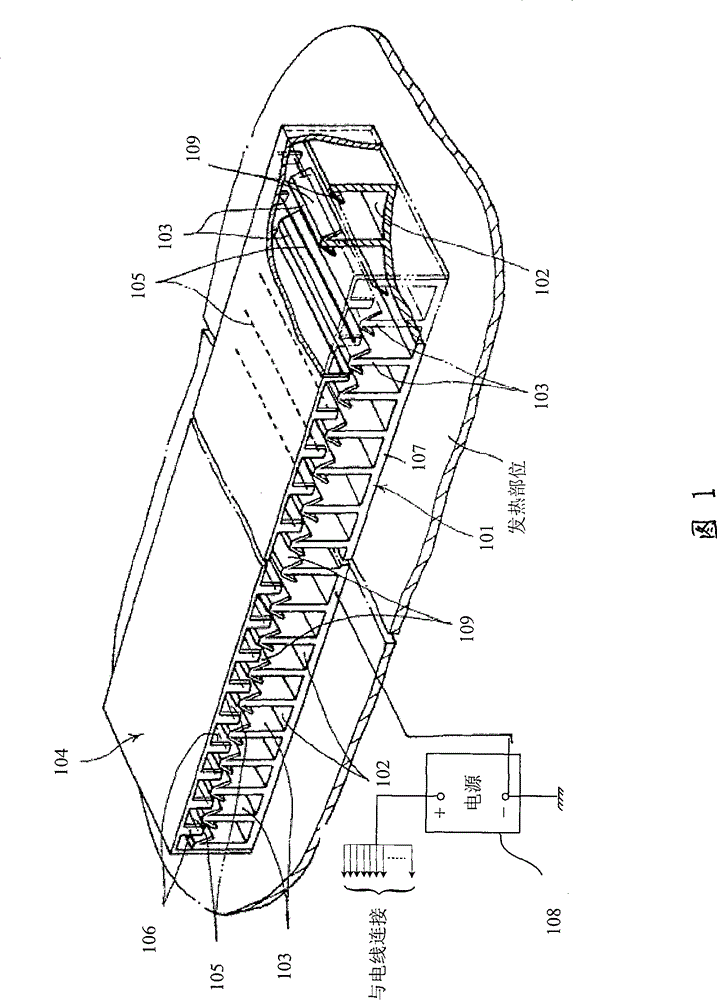Ionic wind radiating device
A technology of heat dissipation device and ion wind, which is applied in laser cooling device, cooling/ventilation/heating transformation, phonon exciter, etc., can solve the problems of not being able to release heat in time, cumbersome manufacturing process, complicated device structure, etc. To achieve the effect of simple structure, reduce the overall volume and improve the heat dissipation efficiency
- Summary
- Abstract
- Description
- Claims
- Application Information
AI Technical Summary
Problems solved by technology
Method used
Image
Examples
Embodiment Construction
[0025] figure 2 A preferred embodiment of an ion wind cooling device of the present invention is shown. As can be seen from the figure, it includes a first group of conductive wires 202 and a second group of conductive wires 203 crossing each other, and the two ends of each conductive wire are fixed on the insulating frame 201, and all the conductive wires in the first group of conductive wires 202 The conductive wires are parallel to each other, all the conductive wires in the second group of conductive wires 203 are also parallel to each other, and the first group of conductive wires 202 and the second group of conductive wires 203 are perpendicular to each other in the xoz plane to form a heat dissipation network. At the intersection of each conductive line of the line 202 and each conductive line of the second group of conductive lines 203, the first group of conductive lines 202 protrude in a circular arc shape along the positive direction of the y-axis, and straddle the...
PUM
 Login to View More
Login to View More Abstract
Description
Claims
Application Information
 Login to View More
Login to View More - R&D Engineer
- R&D Manager
- IP Professional
- Industry Leading Data Capabilities
- Powerful AI technology
- Patent DNA Extraction
Browse by: Latest US Patents, China's latest patents, Technical Efficacy Thesaurus, Application Domain, Technology Topic, Popular Technical Reports.
© 2024 PatSnap. All rights reserved.Legal|Privacy policy|Modern Slavery Act Transparency Statement|Sitemap|About US| Contact US: help@patsnap.com










